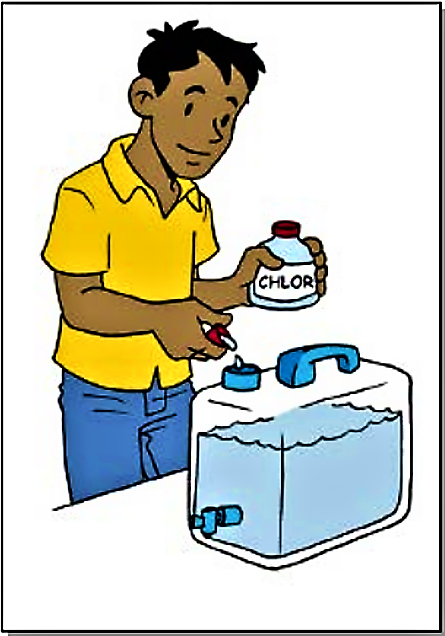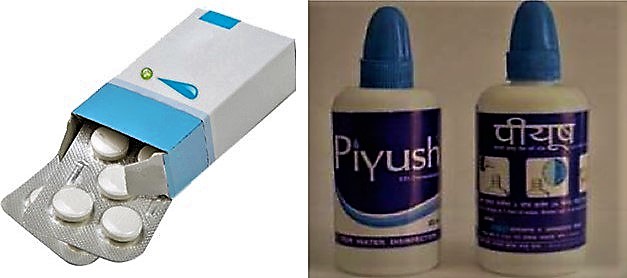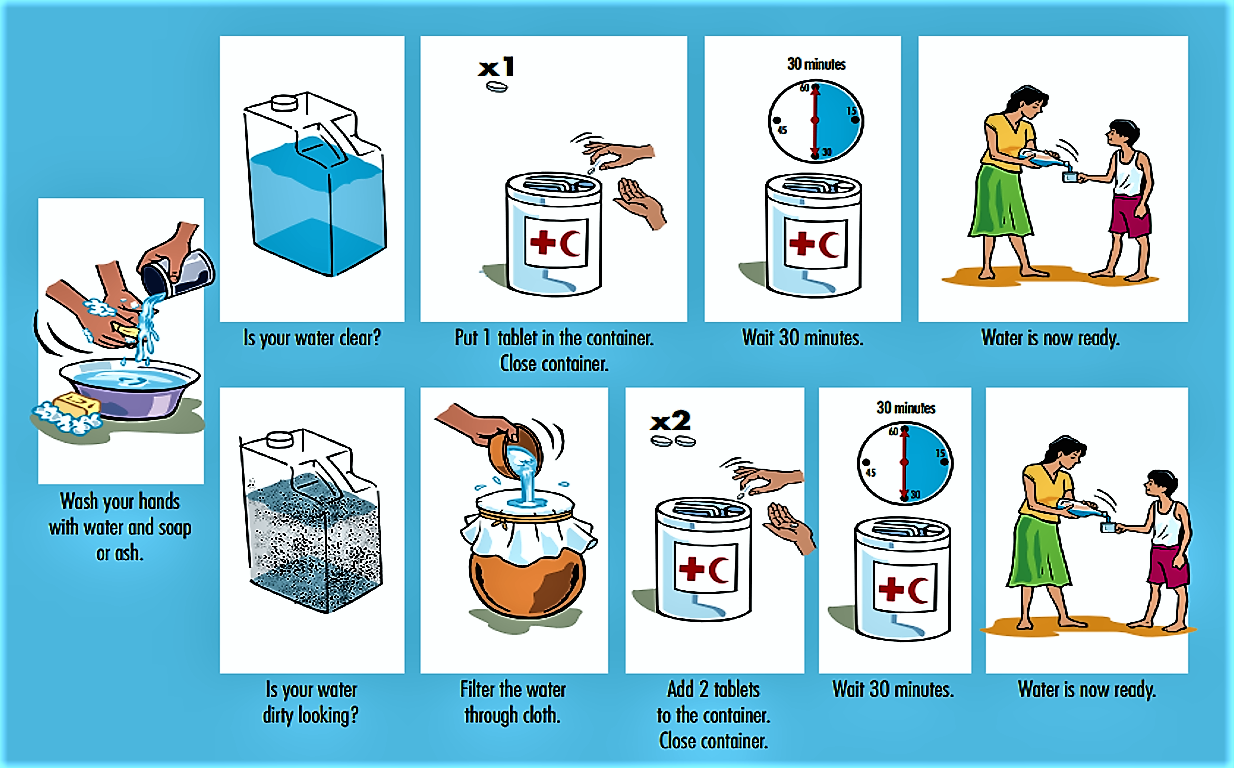Use of chlorine in cleaning water
Introduction

The disinfection of drinking water by adding chlorine is called chlorination. Chlorine was used for the first time in 1850 when John Snow used it in London’s water distribution system to combat cholera. Similarly, American cities like Chicago and New Jersey started to use chlorination around 1908, a step which brought a significant decrease in the number of deaths caused by cholera, typhoid, diarrhoea and hepatitis A. Today, chlorination is used to treat most of drinking water in the world since it is easy, inexpensive and reliable. Chlorine is widely available in different countries with different brand and names.
Chlorination can be achieved by using liquefied chlorine gas, sodium hypochlorite solution or calcium hypochlorite granules and on-site chlorine generators (e.g. WATA). Chlorine is widely applied for the centralised disinfection of drinking water in municipal water supply systems. International agencies have also been promoting chlorination at household level as effective and simple drinking water treatment option in developing countries.
Chlorine as a household level point of use treatment is available either a solution which is added at doses of one to several drops per litre of water to treat, or as tablets, which will dissolve in the treated water. Aside from these commercial products, water can also be treated at the community level by mixing chlorine in water tanks, wells and household vessels.
How does it work?
When chlorine is added to water, the chemical element dissolves and forms radicals. These kill pathogens such as bacteria and viruses by breaking the chemical bonds in their molecules or by attacking the cells of the microorganisms. The different radicals and ions formed during chlorination destroy many bacteria and viruses, but also oxidise some organic matter, dissolve colours and destroy chloramines, toxic products derived from ammonia. It takes about 30 minutes to do this work and make water safe to drink.

Use of chlorine
The correct amount of chlorine solution must be used. If the concentration of chlorine is inadequate the solution may fail to destroy all the harmful micro-organisms and if in excess, health may be adversely affected. Only an appropriate amount of chlorine can destroy most of harmful micro-organisms and provide a safe amount of residual chlorine. Chlorine that does not combine with other components and remains in the water is called “Free Residual Chlorine” (FRC). FRC makes sure that water which has been treated by chlorination will not get recontaminated when being transported or stored. According to WHO guidelines, the FRC concentration in drinking water should be between 0.2 to 0.5 mg/L.
Effectiveness
Very Effective For: | Somewhat Effective For: | Not Effective For: |
|
|
Effectiveness of the Chlorination. Source: CAWST (2009)
Chlorine disinfection of drinking water is limited for the protozoan pathogens (in particular cryptosporidium) and some viruses (WHO 1996). Turbidity can protect microorganisms from disinfection. Further, when the natural organic matter (NOM) of the water is high, this can lead to the formation of disinfection by-products (DBPs) such as halogenated organic molecules, mainly trihalomethanes (THM), some of which are potentially hazardous. However, the risks to health from these by-products are extremely small in comparison with the risks associated with inadequate disinfection, and disinfection should not be compromised in attempting to control DBPs (WHO 1996; WHO 2006).
In 1991, the International Agency for Research on Cancer evaluated the carcinogenic potential of chlorinated drinking water. IARC concluded, that „there is inadequate evidence for the carcinogenicity of chlorinated drinking-water in humans“. However, for water containing large amounts of organics, the formation of carcinogenic halogenated disinfection products derived from the organic matter attacked by the chlorine is extremely high – it is therefore recommended to use pre-filtration (e.g. slow sand filtration or bio-sand filtration).

Chlorination is very suitable for places where people are directly drinking water from bacterial contaminated water sources but where other contamination (e.g. natural organic matter, arsenic) are not of concern.
It is socially acceptable by general public for purifying water because of easy handling, cost effectiveness as well as good removal of microbial organism in drinking water. It is most commonly used for water disinfection during emergencies (IFRC 2008; CDC/USAID 2008; WHO n.y.). However, a constant supply of chlorine must be guaranteed.
Executive Summary
Water disinfection by chlorination was massively introduced in the early twentieth century. It set off a technological revolution in water treatment and complemented the known and used process of filtration. In addition to destroying harmful microorganisms, chlorination also reduces the amount of iron, manganese and hydrogen sulphide in water. Chemical disinfection using chlorine has the benefits of being relatively quick, simple, and cheap and allows a residual amount of chlorine to remain in the water to provide some protection against recontamination.
| In | Out |
|---|---|
Drinking Water |


Comments
Post a Comment